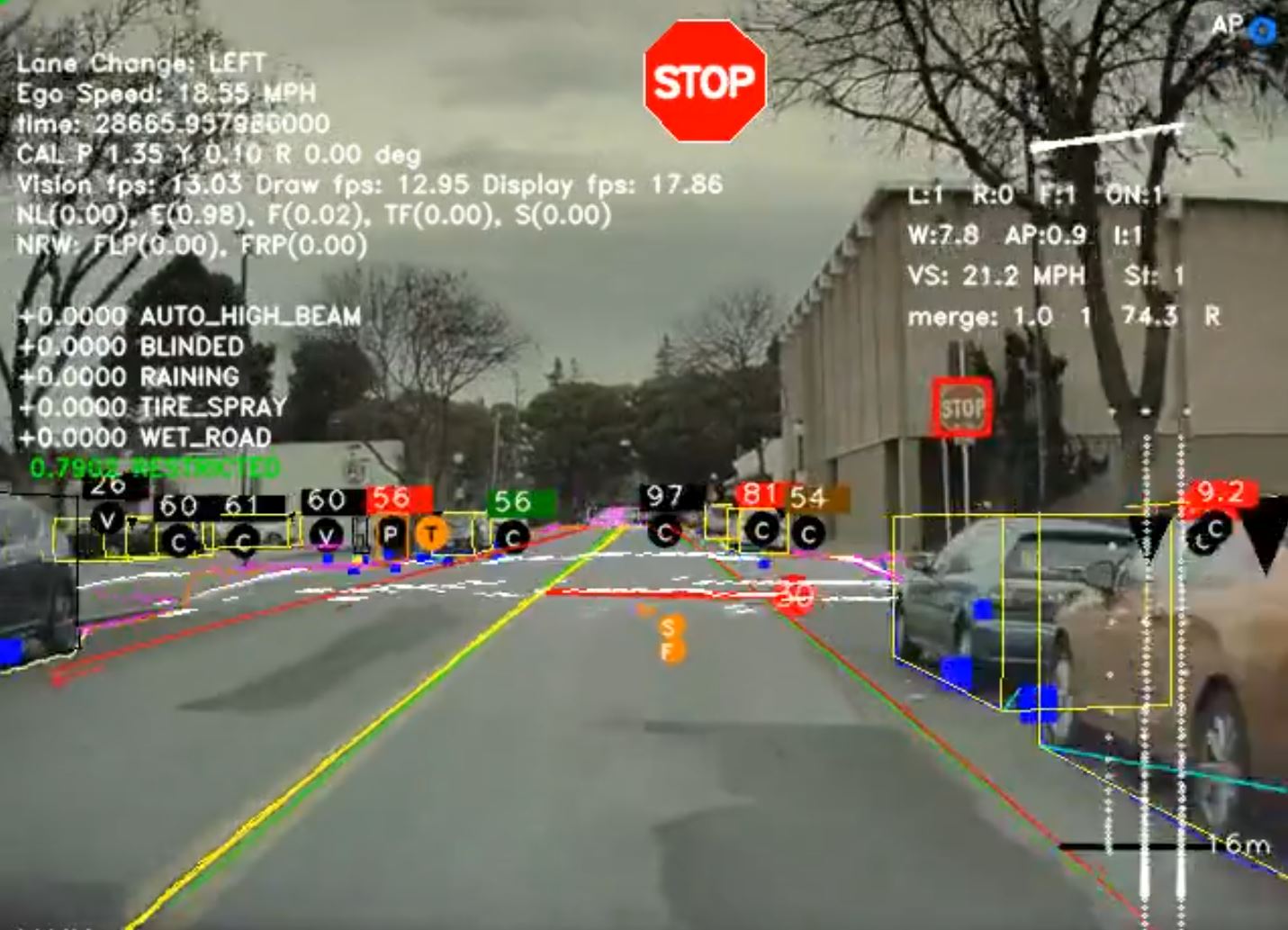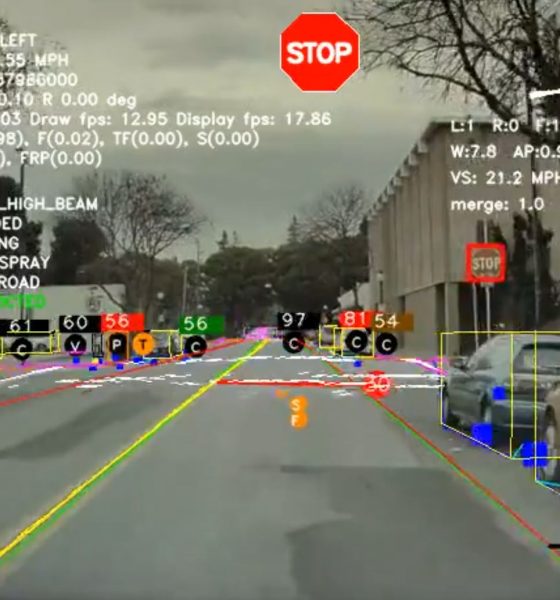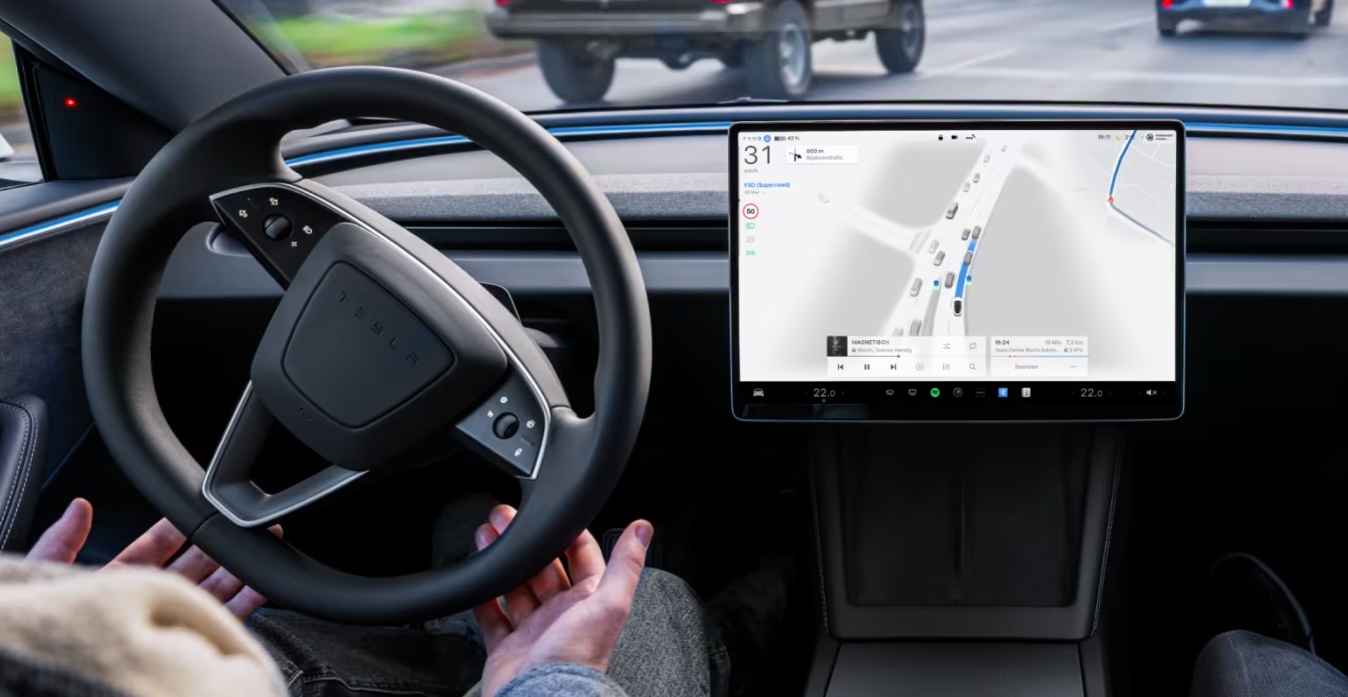

News
Tesla’s Elon Musk will be hosting an AI hackathon party at his house
Elon Musk announced that Tesla will be hosting an AI hackathon, together with the company’s artificial intelligence and autopilot team, at his house in four weeks’ time.
The Tesla chief announced his plans via Twitter on Sunday. Despite impressive numbers revealed during the Q4 2019 earnings call and update, Musk and his Tesla team are not resting on their laurels and remain focused on pursuing advancements to its neural network, which is in the center of Tesla’s goal of achieving a full self-driving vehicle.
During the recent Q4 earnings call, an investor asked the Tesla chief executive for updates on FSD.
“I think that’s looking like maybe it’s going to be couple of months from now. And what isn’t obvious regarding Autopilot and Full Self-Driving is just how much work has been going into improving the foundational elements of autonomy,” Musk said.
Tesla will hold a super fun AI party/hackathon at my house with the Tesla AI/autopilot team in about four weeks. Invitations going out soon.
— Elon Musk (@elonmusk) February 2, 2020
Musk continued to explain how the Tesla team is making great strides in labeling efficiency.
“…in terms of labeling, labeling with video in all eight cameras simultaneously. This is a really, I mean in terms of labeling efficiency, arguably like a three order of magnitude improvement in labeling efficiency. For those who know about this, it’s extremely fundamental, so that’s really great progress on that,” Musk said.
Tesla vehicles rely on a custom chip that boasts of 144 tera operations per second (TOPS) for its self-driving capabilities. This two-chip FSD computer works in tandem with LPDDR4 RAM modules that come with a peak bandwidth of 68 GB/s. There are also two neural network accelerators that work in tandem to process as much as 1TB of data per second. This setup is roughly three times faster, about 80%, and about 1.25 times more power-efficient than the previous hardware. It is also able to process about 2,300 frames per second compared to the 110 frames per second processed by Tesla’s Hardware 2.5.
In his series of tweets on Sunday, Musk also mentioned Tesla’s “Dojo” supercomputer, which is speculated to be capable of processing vast amounts of data to train the company’s neural network. Through active learning, Tesla curates the most useful video clips from its fleet of connected cars and train the neural net to recognize things that it did not previously know.
“Our networks learn from the most complicated and diverse scenarios in the world, iteratively sourced from our fleet of nearly 1M vehicles in real-time. A full build of Autopilot neural networks involves 48 networks that take 70,000 GPU hours to train. Together, they output 1,000 distinct tensors (predictions) at each timestep,” Tesla wrote on the Autopilot AI section of its website.
“At Tesla, using AI to solve self-driving isn’t just icing on the cake, it the cake” – @lexfridman
Join AI at Tesla! It reports directly to me & we meet/email/text almost every day. My actions, not just words, show how critically I view (benign) AI.https://t.co/iF97zvYZRz
— Elon Musk (@elonmusk) February 2, 2020
The last major software update rolled out by Tesla allowed its vehicles to visualize more things while driving in inner-city streets. Teslas now render stoplights, stop signs, traffic cones, traffic pylons, and more.
With the upcoming AI hackathon, Tesla will get together with developers to seek out more efficient algorithms and overall improvements to the core logic for its Full Self-Driving suite through a time-boxed event. With fresh eyes working with the existing AI and autopilot team of Tesla, the carmaker may be able to accelerate the timeline and rollout of its full-featured Full Self-Driving suite sooner.
Further advances in FSD and its Autopilot feature will widen the gap between Tesla and its competitors and solidify the company’s position as one of the leading automakers in the world. These improvements will also take Tesla a step closer to the possibility of Robotaxis that they can deploy at scale.
The hackathon will also allow Tesla to fish for new AI talents to join the team. On Sunday, Musk also mentioned that the electric carmaker is looking for world-class chip designers and C++/C engineers for vehicle control and other functions of Tesla vehicles.
Musk reiterated that educational attainment is not important when joining Tesla but rather a clear understanding of how AI and neural networks function and the ability to build useful applications using that knowledge.

News
Tesla FSD V14.2.1 is earning rave reviews from users in diverse conditions
Tesla’s Full Self-Driving (Supervised) software continues its rapid evolution, with the latest V14.2.1 update drawing widespread praise.

Tesla’s Full Self-Driving (Supervised) software continues its rapid evolution, with the latest V14.2.1 update drawing widespread praise for its smoother performance and smarter decision-making.
Videos and firsthand accounts from Tesla owners highlight V14.2.1 as an update that improves navigation responsiveness, sign recognition, and overall fluidity, among other things. Some drivers have even described it as “more alive than ever,” hinting at the system eventually feeling “sentient,” as Elon Musk has predicted.
FSD V14.2.1 first impressions
Early adopters are buzzing about how V14.2.1 feels less intrusive while staying vigilant. In a post shared on X, Tesla owner @LactoseLunatic described the update as a “huge leap forward,” adding that the system remains “incredibly assertive but still safe.”
Another Tesla driver, Devin Olsenn, who logged ~600 km on V14.2.1, reported no safety disengagements, with the car feeling “more alive than ever.” The Tesla owner noted that his wife now defaults to using FSD V14, as the system is already very smooth and refined.
Adverse weather and regulatory zones are testing grounds where V14.2.1 shines, at least according to testers in snow areas. Tesla watcher Sawyer Merritt shared a video of his first snowy drive on unplowed rural roads in New Hampshire, where FSD did great and erred on the side of caution. As per Merritt, FSD V14.2.1 was “extra cautious” but it performed well overall.
Sign recognition and freeway prowess
Sign recognition also seemed to show improvements with FSD V14.2.1. Longtime FSD tester Chuck Cook highlighted a clip from his upcoming first-impressions video, showcasing improved school zone behavior. “I think it read the signs better,” he observed, though in standard mode, it didn’t fully drop to 15 mph within the short timeframe. This nuance points to V14.2.1’s growing awareness of temporal rules, a step toward fewer false positives in dynamic environments.
FSD V14.2.1 also seems to excel in high-stress highway scenarios. Fellow FSD tester @BLKMDL3 posted a video of FSD V14.2.1 managing a multi-lane freeway closure due to a police chase-related accident. “Perfectly handles all lanes of the freeway merging into one,” the Tesla owner noted in his post on X.
FSD V14.2.1 was released on Thanksgiving, much to the pleasant surprise of Tesla owners. The update’s release notes are almost identical to the system’s previous iteration, save for one line item read, “Camera visibility can lead to increased attention monitoring sensitivity.”
News
Tesla FSD Supervised ride-alongs in Europe begin in Italy, France, and Germany
The program allows the public to hop in as a non-driving observer to witness FSD navigate urban streets firsthand.

Tesla has kicked off passenger ride-alongs for Full Self-Driving (Supervised) in Italy, France and Germany. The program allows the public to hop in as a non-driving observer to witness FSD navigate urban streets firsthand.
The program, detailed on Tesla’s event pages, arrives ahead of a potential early 2026 Dutch regulatory approval that could unlock a potential EU-wide rollout for FSD.
Hands-Off Demos
Tesla’s ride-along invites participants to “ride along in the passenger seat to experience how it handles real-world traffic & the most stressful parts of daily driving, making the roads safer for all,” as per the company’s announcement on X through its official Tesla Europe & Middle East account.
Sign-ups via localized pages offer free slots through December, with Tesla teams piloting vehicles through city streets, roundabouts and highways.
“Be one of the first to experience Full Self-Driving (Supervised) from the passenger seat. Our team will take you along as a passenger and show you how Full Self-Driving (Supervised) works under real-world road conditions,” Tesla wrote. “Discover how it reacts to live traffic and masters the most stressful parts of driving to make the roads safer for you and others. Come join us to learn how we are moving closer to a fully autonomous future.”
Building trust towards an FSD Unsupervised rollout
Tesla’s FSD (Supervised) ride-alongs could be an effective tool to build trust and get regular car buyers and commuters used to the idea of vehicles driving themselves. By seating riders shotgun, Tesla could provide participants with a front row seat to the bleeding edge of consumer-grade driverless systems.
FSD (Supervised) has already been rolled out to several countries, such as the United States, Canada, Australia, New Zealand, and partially in China. So far, FSD (Supervised) has been received positively by drivers, as it really makes driving tasks and long trips significantly easier and more pleasant.
FSD is a key safety feature as well, which became all too evident when a Tesla driving on FSD was hit by what seemed to be a meteorite in Australia. The vehicle moved safely despite the impact, though the same would likely not be true had the car been driven manually.
News
Swedish union rep pissed that Tesla is working around a postal blockade they started
Tesla Sweden is now using dozens of private residences as a way to obtain license plates for its vehicles.

Two years into their postal blockade, Swedish unions are outraged that Tesla is still able to provide its customers’ vehicles with valid plates through various clever workarounds.
Seko chairman Gabriella Lavecchia called it “embarrassing” that the world’s largest EV maker, owned by CEO Elon Musk, refuses to simply roll over and accept the unions’ demands.
Unions shocked Tesla won’t just roll over and surrender
The postal unions’ blockade began in November 2023 when Seko and IF Metall-linked unions stopped all mail to Tesla sites to force a collective agreement. License plates for Tesla vehicles instantly became the perfect pressure point, as noted in a Dagens Arbete report.
Tesla responded by implementing initiatives to work around the blockades. A recent investigation from Arbetet revealed that Tesla Sweden is now using dozens of private residences, including one employee’s parents’ house in Trångsund and a customer-relations staffer’s home in Vårby, as a way to obtain license plates for its vehicles.
Seko chairman Gabriella Lavecchia is not pleased that Tesla Sweden is working around the unions’ efforts yet again. “It is embarrassing that one of the world’s largest car companies, owned by one of the world’s richest people, has sunk this low,” she told the outlet. “Unfortunately, it is completely frivolous that such a large company conducts business in this way.”
Two years on and plates are still being received
The Swedish Transport Agency has confirmed Tesla is still using several different workarounds to overcome the unions’ blockades.
As noted by DA, Tesla Sweden previously used different addresses to receive its license plates. At one point, the electric vehicle maker used addresses for car care shops. Tesla Sweden reportedly used this strategy in Östermalm in Stockholm, as well as in Norrköping and Gothenburg.
Another strategy that Tesla Sweden reportedly implemented involved replacement plates being ordered by private individuals when vehicles change hands from Tesla to car buyers. There have also been cases where the police have reportedly issued temporary plates to Tesla vehicles.









